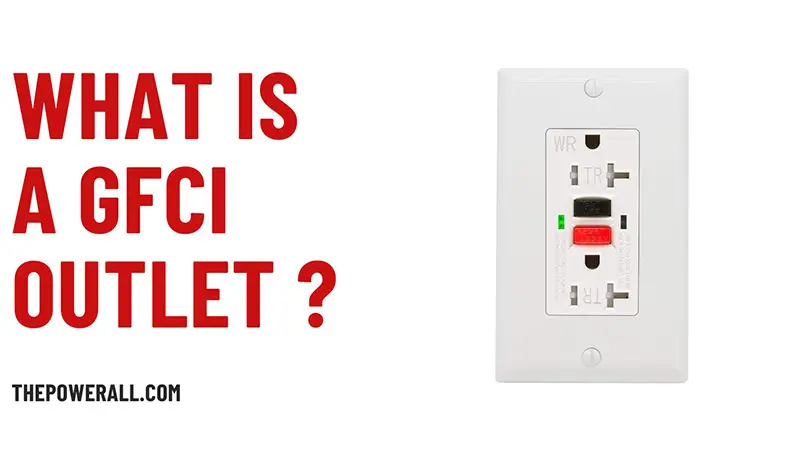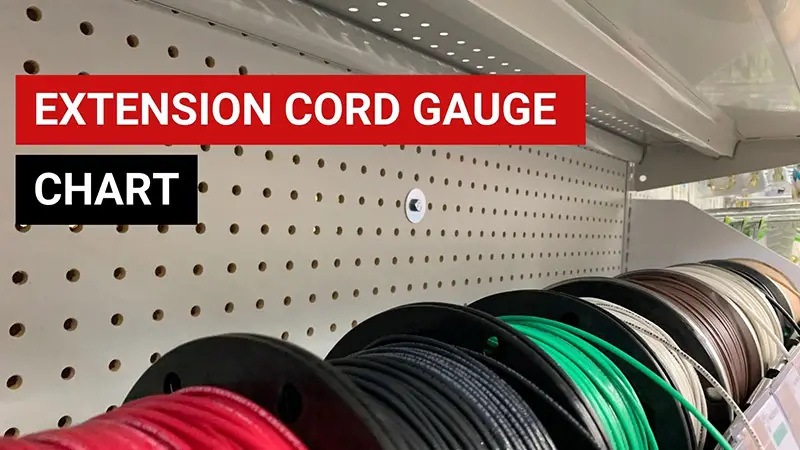A 14 gauge wire is engineered aiming to supply power equipment that doesn’t require too powerful currents. In addition, the tool has already been introduced to the market as a specific tool for power outlets on walls with certain circuits.
However, many have poorly understood 14 gauge wire amps, so they haven’t used them for the right purpose. This also explains our presence today to share more about its amp ratings.
14 Gauge Wire Amp Rating – What To Know
Thickness Or Diameter
14 gauge wire comes with the physical perfect wire size of solid/ stranded AWG 14 wire:
– cross-section zone: 0.0032 inches2, 2.0809 mm2,
– diameter: 0.0641 inches, 1.6277 mm.
Amp Rating
Here are the 14 gauge wire amps:
– @90°C/194°F: 25 Amps.
– @75°C/167°F: 20 Amps,
– @60°C/140°F: 15 Amps,
As such, the amperage of the wire might reach 25 amps for a limited range of wires and applications. For some uncommon applications, it could experience a peak of 20 amps. The Ampacity of the wire reaches 15 Amps for most civil applications (@60°C/140°F).
These values are default ones. Nevertheless, according to the safety rule, 80% capacity is utilized, particularly for civil uses. Hence, the real Ampacity of the cord is:
– @60°C/140°F: 15 Amps * 0.8 = 12 Amps
– @75°C/167°F: 20 Amps * 0.8 = 16 Amps
– @90°C/194°F: 25 Amps * 0.8 = 20 Amps
Therefore, if you are wondering whether you should use 14-gauge wire for wall-power outlets, then here is the answer: please don’t do that since the gauge wire @60°C/140°F of 12 amps isn’t powerful enough for this purpose.
When we use a longer wire, the Ampacity drops by 10% each 15m (~ 50 feet) of the length of the cord.
For instance, the real Ampacity for a 15m 14 gauge wire with the supreme limited ambient temperature of 60 °F/ 140 °F will be:
Ampacity = 15 x 0.8 /1.3 = ~9.23 Amps
12 vs 14 Gauge: How To Tell
The physical dissimilarity between 14 and 12-gauge wires isn’t big:
– 14 gauge wire diameter: 0.0641 inches, 1.6277 mm.
– 14 gauge cross-section zone: 0.0032 inches2, 2.0809 mm2.
– 12 gauge wire diameter: 0.0808 inches, 2.0525 mm.
– 12 gauge cross-section zone: 0.0051 inches2, 3.3088 mm2.
The simplest method of letting you know which one is 14 or 12 gauge is to just read the text on the insulation labels to see whether they’re visible and present.
If you are experienced in the electricity field and confident to “feel” these wires to find out which one is 14 and which one is 12 gauge, then you should do it this way. Otherwise, don’t apply the fast solution to avoid some complicated issues later.
Maybe the best and safest way to get the specification of the two gauges is to use a caliper – particularly digital calipers – to measure their diameters.
See more: 12 gauge wire amp rating
How Far Does A 14 Gauge Wire Run Before Voltage Drop?
Your 14 ga wire can run up to 15 m before getting a voltage drop for 120-volt circuits.
Traveling stretched distance is a key root of dropping voltage. In addition, other key factors are heat, power, or resistance, which also contribute to the voltage drop.
At a 120-volt circuit with 14 gauge wires, when you transcend 100 feet, you might anticipate a drop of voltage around 3.3%. When you surpass 50 feet at 240v, the drop might increase twofold to 6.6%.
Thus, at 240V, it will decrease to 232.08 voltage, and at 120, it will decline to 116.04 volts. Double voltage and distances mean it will double the drop of voltage.
FAQs
How Many Amps Can 14 Awg Carry?
The short answer for this query is 15 amps.
If you have a copper wire with 14 gauge, you might run 15 amps. Yet, there have still been some cases where you melt most of its insulation off with the Ampacity, and then it would not be fun at all to accidentally touch it.
According to many experts, there will be fairly much room for residential applications; 14 gauge wires are rated for around 15 amps at a certain temperature extent of 60℃.
Can I Run A 20 Amp Circuit On 14 Gauge Wire?
Definitely No!
You can not run any 20 amp circuit on 14 gauge wires. You also have to apply this rule in the case when you run a small light fixture that comes with built-in wires.
These gauge wires, which are integrated into the installation, are permitted as a factor of a produced assembly. Nevertheless, any added gauge wire has to be matched with the electrical circuit interrupter protecting the electrical wires.
What Is The Difference Between 14/2 Wire And 14/3 Wire?
There are four key differences between the two types:
| 14/3 wire | 14/2 wire | |
|---|---|---|
| Appropriate volt circuit | 240V | 120V |
| Quantity of conductors | 3 | 2 |
| Quantity of wires | 4 | 3 |
| Price | pricier | more affordable |
In terms of use purpose, 14/2 wire is commonly used in most home electrical wiring for supplying small amperage or low electrical currents.
14/3 wire cables are preferred in almost all cooking uses in kitchens where there is an array of electrical devices.
In The Nutshell
If you still accompany us until these last words of the content about the amp rating on 14 gauge wire, we bet you are crystal-clear about its amperage, tricky queries about the wires, and even its specification like diameter.
Our post today brought informative knowledge to you as well as your friends or family who need to know more about wire cables. Now is the right time to say thank you and see you in the coming content.
See also: 10/2 or 10/3 wire for air conditioner










0 Comments